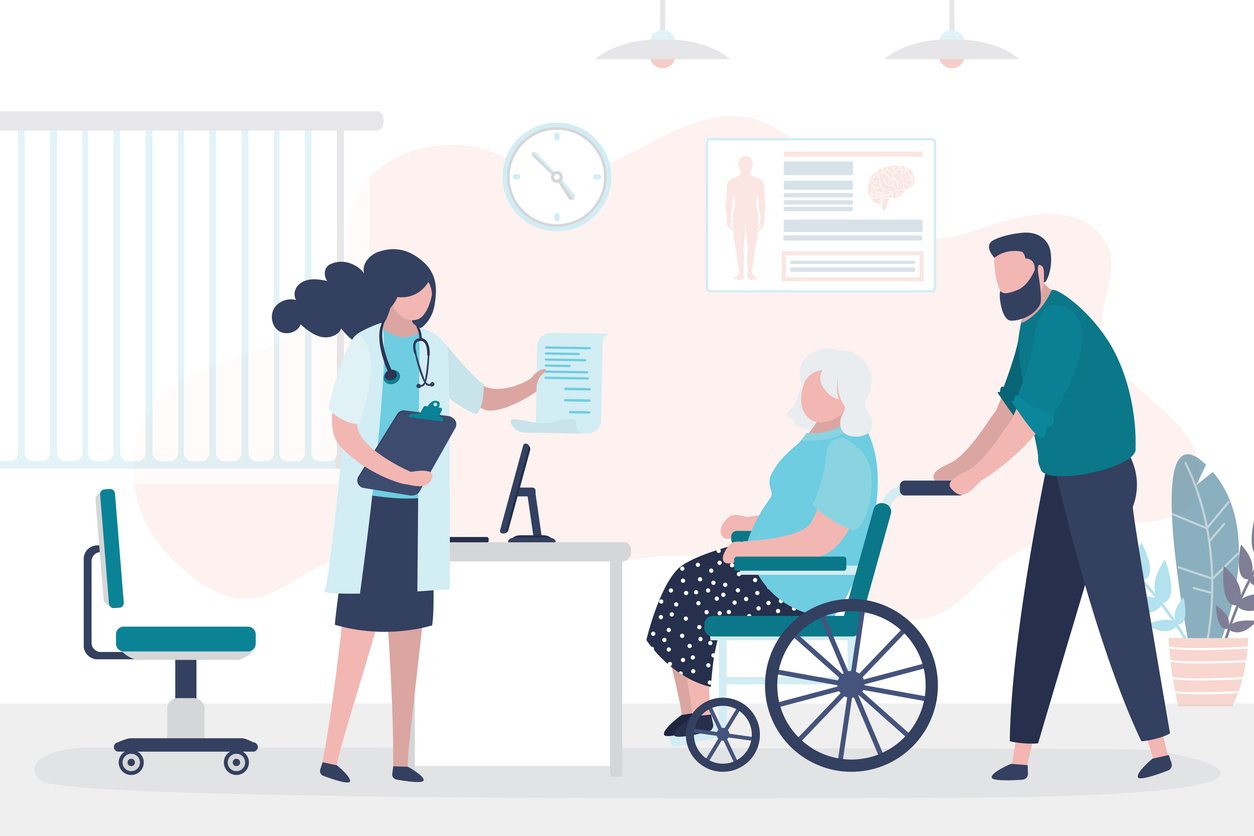Introducing a New Paradigm for Supporting Family Caregivers

Family caregivers—the parents, partners, children, siblings, and friends of patients living with chronic, serious illnesses and disabilities—have always served as the invisible backbone of the health care system in the United States. According to the National Alliance for Caregiving, as of 2020 there were at least 53 million caregivers in the U.S., a dramatic (10 million+) increase from 2015. The numbers will become even higher as the U.S. health system shifts to the use of ambulatory, telehealth, and in-home services that rely on caregiver support for effective patient care. Beyond the recent impact of the COVID-19 pandemic, the trend of moving more health care into the home shows no sign of slowing down.
"Family caregivers—the parents, partners, children, siblings, and friends of patients living with chronic, serious illnesses and disabilities—have always served as the invisible backbone of the health care system in the United States."
What is the Impact of Caregiving on Family Caregivers?
The responsibilities of family caregivers are physically, emotionally, financially, spiritually, and existentially demanding. Unlike patients, caregivers bear witness to suffering on the sidelines, often feel powerless in their peripheral role in the overall medical care of patients, and struggle to balance hope that their loved one will survive while contending with anticipatory grief.
"Caregivers are increasingly being asked to shoulder medical and nursing responsibilities that had been the role of trained health care professionals, and too often, family caregivers do this without training, education, or support."
At the same time, caregivers are increasingly being asked to shoulder medical and nursing responsibilities that had been the role of trained health care professionals, and too often, family caregivers do this without training, education, or support. It is not surprising, then, that we are seeing anxiety, depression, and even post-traumatic stress disorder at higher rates in caregivers than in the patients for whom they provide care. Caregivers are also at high risk for their own medical problems, including cardiovascular disease, poor immune functioning, fatigue and sleep difficulties, and even higher rates of mortality. All told, without support from the health care system, caregivers likely represent the next generation of patients with chronic or serious illness.
"Without support from the health care system, caregivers likely represent the next generation of patients with chronic or serious illness."
A Profound Need for Support
The need for comprehensive clinical and practical support for family caregivers was clear to me in 2010 when I began working as a postdoctoral fellow at Memorial Sloan Kettering Cancer Center. As a clinical psychologist, my work initially focused on supporting patients with advanced cancers. What was so striking to me while working with these patients was that, as opposed to focusing on their own mortality, their narratives instead focused on their parents, partners, children, siblings, and friends: their family caregivers. The individuals left in waiting rooms and at home. The individuals who they identified as the linchpin of their care, and who would be most deeply impacted by their eventual deaths.
I realized back then—as health care was already moving to the home and the distress and burden of caregivers was already well-documented in the scientific literature—that family caregivers were desperately in need of training, education, and psychosocial support, and yet, at that time, there were no targeted support services for caregivers in any cancer center or hospital system in the country.
To begin to address this gap, a year later I founded the Caregivers Clinic at Memorial Sloan Kettering Cancer Center (MSK), the first targeted psychosocial care program for family caregivers in any cancer center or hospital system in the U.S. Its mission is to ensure that every caregiver experiencing significant distress as a result of their critical role is identified and receives necessary psychosocial services. The clinic has become an exemplar care model upon which a toolkit from the American Cancer Society was developed, which helps health care systems nationally develop sustainable support programs for caregivers of patients with all serious illnesses and disabilities.
That same year, I stepped into the caregiving role for my father who had Lewy body disease. Living a profoundly challenging caregiving experience behind the scenes of leading the Caregivers Clinic highlighted many critical lessons, which I share in my recently published book. My goal in writing Stand By Me was to provide a “Cliff’s Notes” version to the training, education, and support that is delivered by the Caregivers Clinic, introducing a new paradigm for caregiver support in the context of serious illness, and further disseminating these best practices.
How You Can Support Family Caregivers Today
Below, I’ve highlighted steps that you can take right now to support family caregivers in your practice.
1. Acknowledge caregivers as critical members of the health care team
Too often, caregivers feel invisible and underappreciated, feelings that contribute to their distress. When caregivers accompany patients to visits, be sure to recognize their presence and invite them to actively participate in the meeting.
2. Consider each interaction with a family caregiver as an opportunity to screen for distress and unmet needs
Do not assume that caregivers will ask for help when they need it. Instead, each time you engage with a family caregiver as part of patient care, make a point to ask them how they are doing and how you and your department can best support them. A recent CAPC blog highlighted how to do just this, and preliminary research shows that screening alone improves caregiver quality of life.
3. Remember that caregiver distress does not disappear when the patient’s health improves
There is often a somewhat paradoxical experience of distress rising in caregivers when patients are no longer receiving active treatment or have entered survivorship. This often coincides with families disconnecting from the health care system. So, as you work to discharge patients from your care, be sure to check in with their family caregivers, evaluate their needs, and share referrals as appropriate.
4. Normalize distress
So often, caregivers judge themselves for experiencing distress. But distress is a normal and expected part of caregiving. Normalizing this experience—for example, by simply saying, “It makes sense that you feel this way given all that is on your plate”—is a simple yet powerful intervention.
5. Clarify the current state of your patient’s illness and what patients and caregivers can expect
Much of the distress caregivers experience is driven by uncertainty. And while uncertainty is an expected element of serious illness, providing clear prognostic information and explanations of the goals of various treatments—after asking if this is wanted—may reduce some anxiety and assist in decision-making.

Be the first to read articles from the field (and beyond), access new resources, and register for upcoming events.
SubscribeEdited by Melissa Baron. Clinical review by Andrew Esch, MD, MBA.
